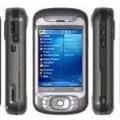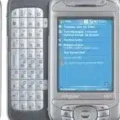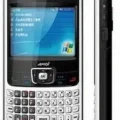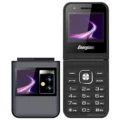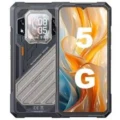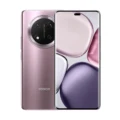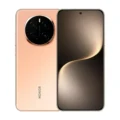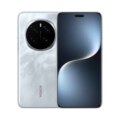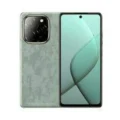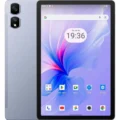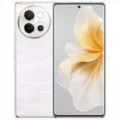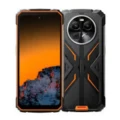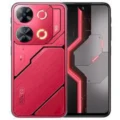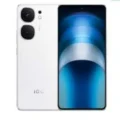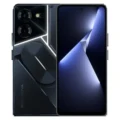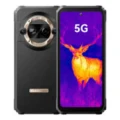AT&T Quickfire
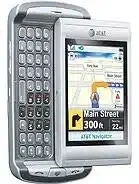

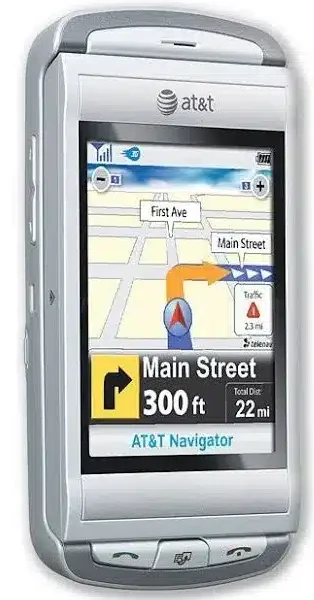
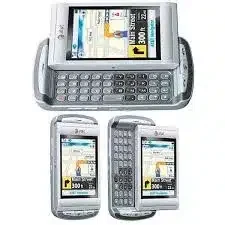
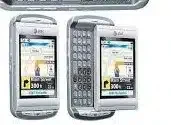
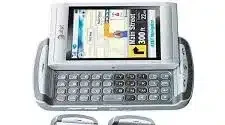
- :
- : 2.8" 240x320 pixels
- : 1200mAh
- : 1.3MP Video recorde
Unveil the AT&T Quickfire, a dynamic mobile device that combines the convenience of a touchscreen with the practicality of a full QWERTY keyboard. Released in 2008, the Quickfire is a feature phone designed for those who appreciate tactile typing and easy navigation.
Key Features:
- Touchscreen Display: A 2.8″ TFT screen with 256K colors provides a vibrant interface for all your mobile interactions.
- QWERTY Keyboard: Slide-out full keyboard allows for efficient messaging and email composition.
- Camera Capabilities: Capture moments with a 1.3MP camera and enjoy basic video recording features.
- Music and Media: Keep entertained with the built-in music player and expandable microSD slot for additional media storage.
- GPS Functionality: Navigate with confidence using the GPS and A-GPS capabilities, guiding you to your destinations.
- Connectivity: Stay connected with stereo Bluetooth support and enjoy the convenience of voice commands and predictive text input.
The AT&T Quickfire is a testament to the era of multitasking mobile devices, offering a suite of features that cater to both communication and entertainment needs. Whether you’re a fan of the tactile feel of physical keys or the ease of a touchscreen, the Quickfire delivers a versatile user experience in a compact and durable design.
Specs
Network
| 2G Network GSM 850 / 900 / 1800 / 1900 - SIM 1 & SIM 2 (dual-SIM) CDMA 800 / 1900 |
GSM 850 / 900 / 1800 / 1900 |
| 3G Network |
HSDPA 850 / 1900 / 2100 |
| Speed |
HSPA 3.6/0.384 Mbps |
LAUNCH
| Announced | November, 2025 |
| Status |
Discontinued |
BODY
| Dimensions | 109 x 56 x 18 mm (4.29 x 2.20 x 0.71 in) |
| Weight | 136 g (4.80 oz) |
| SIMs SIM (Subscriber Identity Module) is a small card that contains mobile network subscriber's account information. This allows the phone using the card to attach to a mobile network. The SIM card is most commonly associated with GSM and UMTS mobile networks. Moving a SIM card from one phone to another allows a subscriber to switch mobile phones without having to contact their mobile network carrier. SIM cards can also be used by a phone to store limited amounts of data, such as phone numbers and text messages. |
Mini-SIM |
Display
| Display Type Display Technology => A number of display technologies and types used in mobile phones => TFT (Thin Film Transistor), IPS (In-Place Switching), OLED (Organic Light Emitting Diode), AMOLED (Active-Matrix Organic Light-Emitting Diode), Super AMOLED (an even advanced version of AMOLED), Resistive Touchscreen (Resistive touchscreens contain two layer of conductive material with a very small gap between them which acts as a resistance), Capacitive Touchsceen (Capacitive touchscreen technology consists of a layer of glass coated with a transparent conductor) | TFT, 256K colors |
| Size | 2.8 inches, 24.3 cm2 (~39.8% screen-to-body ratio) |
| Resolution | 240 x 320 pixels, 4:3 ratio (~143 ppi density) |
PLATFORM
MEMORY
| Card Slot Memory Card Slot is a special slot for inserting a memory card. Memory cards allow you to expand the phone's built-in memory, A memory card (sometimes called a flash memory card or a storage card) is a small storage medium used to store data such as text, pictures, audio, and video, for use on small, portable or remote computing devices such as mobile phones, mp3 players, digital cameras. | microSD (dedicated slot) |
| Internal | 29MB |
MAIN CAMERA
| Cameras Specs Today’s smartphones come equipped with a very comprehensive set of camera related specifications. Our smartphone, for many of us, has become our primary camera due to it being the one we always have with us. |
1.3 MP |
| Video | Yes |
SELFIE CAMERA
| Cameras Specs Today’s smartphones come equipped with a very comprehensive set of camera related specifications. Our smartphone, for many of us, has become our primary camera due to it being the one we always have with us. | Yes |
SOUND
| Loudspeaker | No |
| 3.5mm jack |
No |
COMMS
| WLAN |
No |
| Positioning |
GPS, A-GPS |
| Bluetooth Bluetooth is a wireless communications technology for exchanging data between mobile phones, headsets, computers and other network devices over short distances without wires, Bluetooth technology was primarily designed to support simple wireless networking of personal consumer devices. | 1.2, A2DP |
| Infrared Infrared connectivity is an old wireless technology used to connect two electronic devices. It uses a beam of infrared light to transmit information and so requires direct line of sight and operates only at close range. | |
| USB | Proprietary |
| NFC NFC (Near field communication) is a set of standards for smartphones and similar devices to establish peer-to-peer radio communications with each other by touching them together or bringing them into proximity, usually no more than a few inches. | |
| Radio |
Features
BATTERY
| Battery Type Battery Type => Cell phones run on various kinds of batteries depending on the manufacturer, phone size or shape and features. There are basically four types of cell phone batteries => Lithium Polymer, Lithium Ion, Nickel Metal Hydride and Nickel Cadmium. | Li-Ion (Lithium Ion) |
| Capacity Battery Capacity is a measure (typically in Amp-hr) of the charge stored by the battery, and is determined by the mass of active material contained in the battery. The battery capacity represents the maximum amount of energy that can be extracted from the battery under certain conditions. | 1200 mAh |
| Placement | Removable |
MISC
| Colors |
Gray, Green, Orange |
| SAR SAR (Specific absorption rate): Each GSM handset has a radio transmitter and receiver in order to operate in the wireless GSM network. That transceiver is manufactured so that when used next to the ear and when worn on the belt, it won't exceed the limits for exposure to radio frequency energy set by the authorities.The authorities in question here are the Federal Communications Commission (FCC) of the U.S. Government, Industry Canada of the Canadian Government (IC), and the Council of the European Union. |
1.10 W/kg (head) 0.99 W/kg (body) |
TESTS
Reviews
Disclaimer Note
We strive to maintain accurate and up-to-date content on our website for general information purposes only. Please refrain from using the material for business, legal, or any other decisions.


